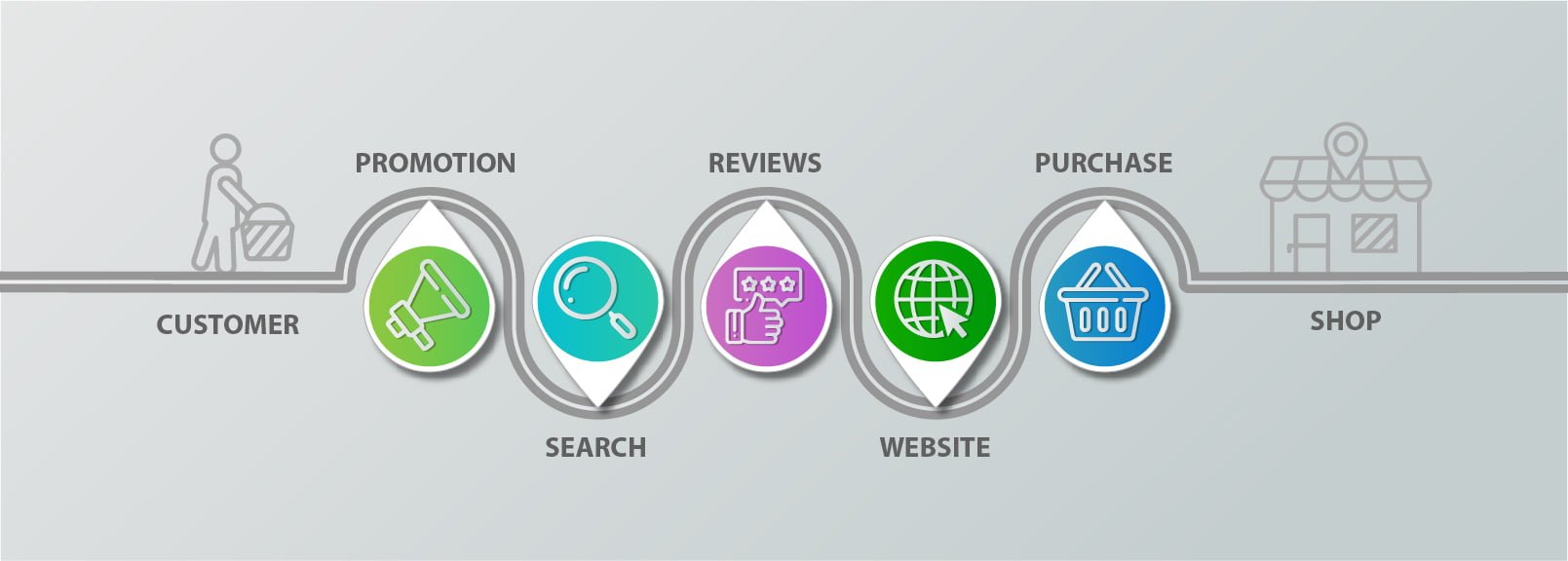We spoke of the Drifting Retail journey a while back, and if you remember there, we talked of the evolving customer journey from the traditional AIDA funnel to a very non-linear model where you find the customer engaged in a number of parallel activities to learn, confirm and revalidate the purchase choice. If the customer’s path to purchase has evolved, it is important for companies to understand the change. Only once the companies understand the new customer journey can they mould their selling efforts to ensure a successful connection with the customer. This may mean adapting sales channels and marketing messages to maximize returns, and that brings me to today’s point of discussion, “Customer Journey Mapping”. Also called User Journey Mapping.
One needs to understand that not only is the customer journey changing, but so are their expectation from organizations and their products and services. In today’s era of living a large part of your life on the internet, the customer engages with a number of channels; the onus on making engagement on each channel a delightful one lies with the organization.
Increasingly, customers are placing as much weightage on the products and services as they are on their experience while engaging with the brand. Customers are increasingly expressing their preference to communicate with the company in real time. As customers demand an omnichannel presence of a company, they also demand the experience across channels to be seamless and delightful.
Simply put, it is a visual story of the customer’s interactions with a brand/products or services. This needs you to step into the customer’s shoes and see the process of a purchase from their perspective. This gives you a good insight into the likely bottlenecks that the customer faces in accessing you & your offerings, which you can then address and fix.
The first step here is to map out all possible customer touchpoints, such as a website, social channels, and interactions with marketing, sales, and service teams. User journeys are then created across these various touchpoints for each buyer persona.
The customer experience at each touchpoint should be included in a customer journey map.
With the changing customer journey, customer expectations are changing; they are not only seeking more value but also looking at solutions that suit their needs.
Customer Journey Mapping helps you understand their needs and expectations and in turn, personalize and optimize your customer experience.
Once you have the expectations benchmarked, the mapping process helps you understand how well you are doing against that benchmark. Lastly, you will be able to create a logical order for your consumer’s journey.
Customer Journey mapping enables an organization to initiate omnichannel marketing. How?
It also allows marketers to target and follow along this purchase journey across channels & touchpoints. For example, a customer who browses a product on a website can be retargeted through Google ads or social media marketing.
There are typically five steps to Mapping this Journey.

Strategic questions to ask: “Who are our best customer prospects?”
Approach: Segmentation Analysis, Prospect Analysis, Customer Lifetime Value Analysis, Situation Review
Deliverables: Customer Personas, Architype Video.
Strategic questions to ask: “What is their current experience?”
Approach: Customer Interviews, Ethnography, Intercept studies, Analytical research
Deliverables: Situational Analysis, Touchpoint Mapping, Purchase Cycle
Strategic questions to ask: “Which touchpoints have the maximum impact on success?”
Approach: Customer Interviews, Importance ranking, Analysis, Analytical research, Financial Impact, Projection
Deliverables: Touchpoint Ranker, Touchpoint ROI Analysis
Strategic questions to ask: “How do we make their experience exceptional?”
Approach: Experience Design, Mapping, Concept, Definition/ Testing, Operation/ business process review
Deliverables: Experience creation, Workshop, Implementation Strategy, cost-benefit Analysis, TouchPoint Guidelines, Operational Ideas, Idea Presentation, Rollout plan
The Strategic question to ask: Are we delivering the desired experience
Approach: Benchmark scoring, Quarterly Tracking
Deliverables: TouchPoint Performance, Dashboard, Experience Dashboard
Customer journey mapping helps organizations to understand customer interaction in this digitally mobile-first world. It is critical to stay relevant and successful. As this helps you develop products & device messages that resonate well with the target customer and the measurement matrix ensures that your experience across touchpoints exceeds or is in line with the customer expectations.
